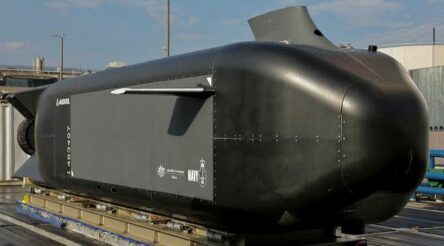Canberra threatens exporters as statistics show Australia’s minerals dependence

Analysis by Peter Roberts
This week saw the extraordinary spectacle of an Australian prime minister, Scott Morrison, threatening exporters and telling them to cut back on exports.
For Morrison to warn alumina producers Rio Tinto and Alcoa to cut back on exports to the United States was strange enough, but the reason for it was even stranger.
The reasoning is if we export too much, the United States will impose new tariffs or other barriers on us.
So Australian companies should behave irrationally and forego sales and profits, because there is an irrational man in the White House who might punish his closest ally?
Of course Morrison might be right, but the warning is at odds with our long term balance of trade deficits, only temporarily in surplus at the moment.
Meanwhile the Australian Industry Group released a new analysis which showed just how dependent Australia is on a few large minerals exporters, and how small is our exporting community of value-added products such as those produced by the nation’s manufacturers.
The analysis found 460 large exporters, fewer than one per cent of exporting businesses, accounted for 88 per cent of exports by value in 2017-18.
These are almost exclusively exporters of undifferentiated and barely processed mineral ores.
A small number of manufacturers appear in the next group – the 11,000 exporting SMEs.
This group, 21 per cent of exporting businesses, accounted for 11 per cent of exports by value.
Finally 41,500 micro-exporters, 78 per cent of exporting businesses, account for less than one per cent of exports by value,
The analysis shows that 9,182 manufacturing businesses, 10.8 per cent of manufacturers, are exporting.
Of the 53,015 Australian businesses directly exporting in 2017-18, 49 per cent had fewer
than three export transactions, 41 per cent had between three and 50 export transactions, and only 10 per cent had more than 50 export transactions in the year.
As AiG concludes: “This illustrates the concentrated nature of Australian’s goods exports activity.”
@AuManufacturing reports on many of Australia’s great manufacturer exporters, and exports have been growing driven by a greater dynamism in the sector and by the value of the dollar.
Of course the cost of energy among other domestic costs weigh on exports.
But it is clear that these are a small proportion of manufacturer exporters, and they make up a tiny portion of Australia’s trade.
We know this because we have a balance of trade deficit in manufactures of more than $100 billion a year.
That is roughly the same size as Australia’s current manufacturing output – so the manufacturing sector would have to double in size, with all that increase going to export, for us to achieve a trade balance.
We have a very long way to go.
Picture: Thales Bushmaster at National Manufacturing Week
Subscribe to our free @AuManufacturing newsletter here.
@aumanufacturing Sections
Analysis and Commentary Awards Defence Manufacturing News Podcast Technology Videos










